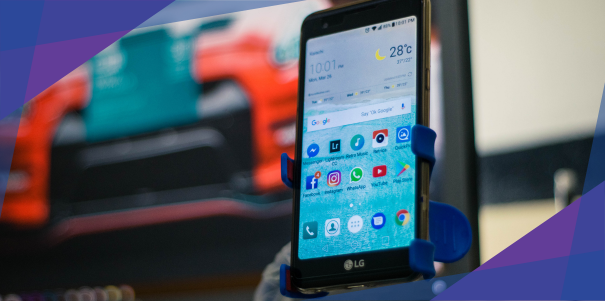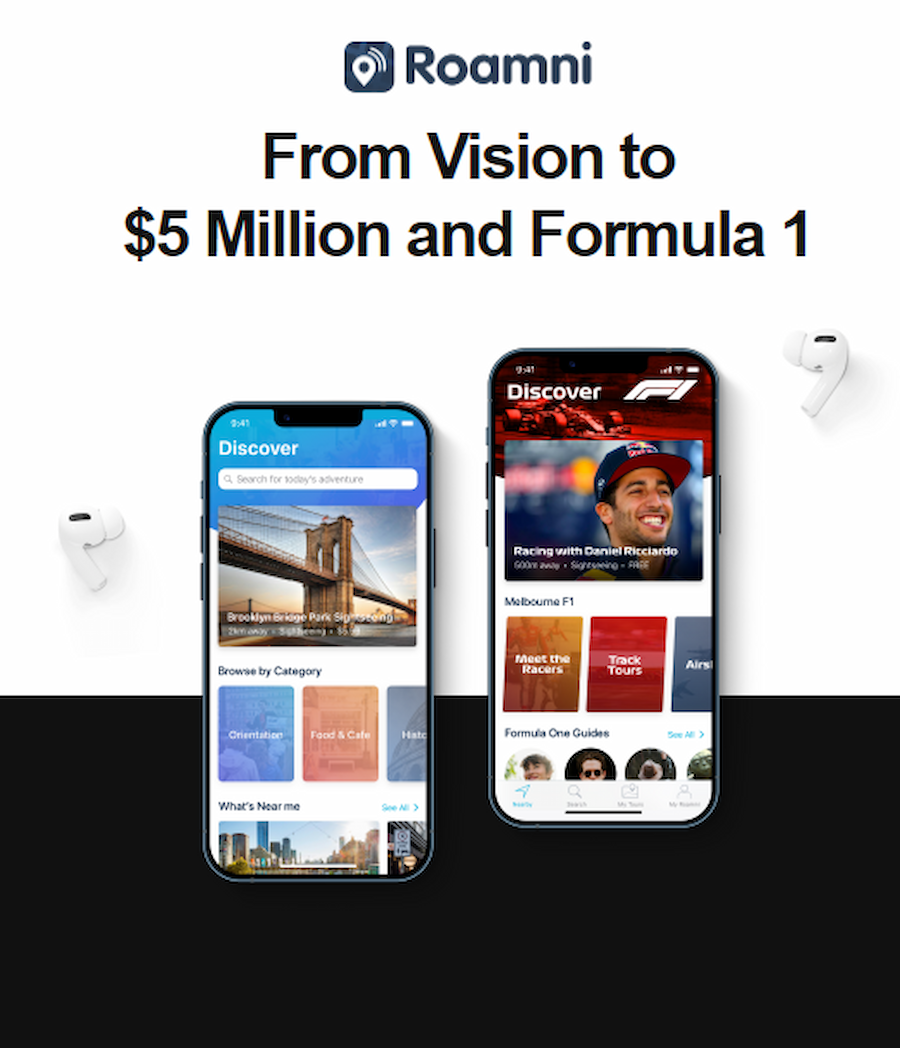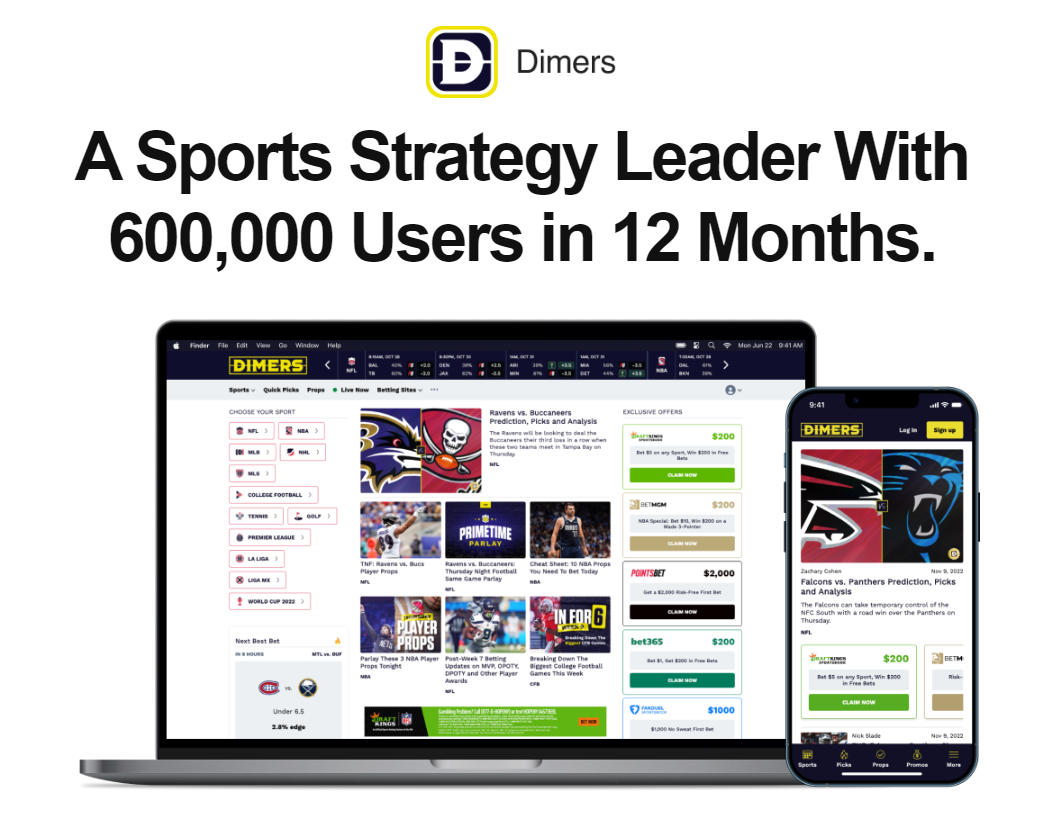How Much Does Android App Development Cost, and How Can You Save?

Android is best summed up in three words: global, market, dominance.
As of 2023, around 70% of the world’s mobile devices run the Android operating system.
This fact is clear: an Android app is an excellent magnet to attract most of the planet’s customers and eyeballs.
No wonder many entrepreneurs and big thinkers are considering developing mobile apps for Android devices. How about you? Have you considered building Android apps? Have you ever wondered how much Android app development costs?
The cost of developing an Android app depends mainly on how complex it is and can vary from:
| $30,000 to $60,000 | For a basic Android app |
| $60,000 to $300,000+ | For a simple Android app |
| $300,000+ | For a complex Android app |
Yes. Quality Android app development requires significant investments, with most apps in the $100,000 to 300,000+ range.
Too expensive? There’s another way.
You can go lean and grow from there, like our successful partners Vello and Roamni. These clients spent just $15,000 to $20,000 initially for design prototypes. From there, they were able to scale and attract capital for full-fledged app development.


If this sounds like something you’d be interested in pursuing, I encourage you to keep reading to learn how you can fulfill your app development goals without draining your resources.
Here’s what I’ll cover in this article:
- Factors that influence app development costs
- How to avoid spending too much on Android app development
Let’s get started!
6 Major Factors Affecting Android App Development Cost
1. App and UX design
Studies show that around 32% of customers would abandon the brand they loved after just one bad experience.
Android apps are no different from physical stores. These applications are also venues where customers can either smile with glee or frown in displeasure. Hence, investing in a well-executed user experience (UX) design is essential for successful Android apps. It boosts user satisfaction, increases conversion rates, and enhances the brand’s reputation. This is why about 10-20% of a project’s total costs often go to design.
A carefully crafted UX design not only enhances user experience but also provides a clearer project scope. By gaining a deeper understanding of user requirements and business objectives, you can minimize the risk of investing in expensive and unnecessary features, thus optimizing your Android app development costs.
Design is so crucial in ensuring the efficient use of resources that many of our projects at Appetiser begin with the design stage.
Think of your Android app as an actual store or establishment. The design stage is somewhat similar to planning and designing that store. But instead of blueprints and models, our product designers use sketches, wireframes, and prototypes to visualize your app’s structure and layout.
Through detailed sketches, we can offer an approximate cost estimate for your Android app development endeavor. Following that, our proficient designers create a wireframe for your product, aiding in a holistic comprehension of the app’s user experience flow and visualizing the design result.
As we progress through the design stage, you will eventually have access to a world-class interactive prototype for securing development financing.
For more information on our design stage and how designs can help you manage Android app development costs, book a free consultation with us.
2. Features and functionality
Suppose you’ve visited a flagship Nike store. In that case, you’ve probably encountered some of the latest and advanced store elements, such as virtual try-on experiences, interactive installations, and product customization features.
As you may imagine, setting up stores with such futuristic features costs the company hundreds of millions of dollars.
The same principle applies when building an Android application.
The intricacy and variety of features significantly affect mobile app development cost. Features with higher complexity demand more development time, leading to increased costs. At Appetiser, we consistently recommend that our clients begin with a minimum viable product (MVP).

Source: Inflectiv.co
The MVP mindset entails prioritizing the essential features needed for users to make purchases and engage with the fundamental functionalities of the platform. This approach increases speed to market, which provides the following advantages:
- Quicker and more effective collection of user feedback
- Better app improvement implementation based on such feedback
In our experience building successful Android apps, the following features are often enough to launch a viable product:
- User registration and login
- Product/service/virtual item browsing and search
- Payment gateway integrations
- Reviews and ratings
- Social media integrations
If you feel a strong urge to plug in more “nice to haves,” remember that the first-ever Nike retail store in Portland, Oregon had a straightforward design. Despite its initial simplicity, Nike eventually became the sporting household name it is now.
For a deeper grasp of the MVP concept, explore our article highlighting successful instances of MVP apps and their relevant strategies.
3. Team of developers
The size and location of your Android app development team, as well as the proficiency level and experience of developers, also contribute to the overall cost.
When thinking about the expenses associated with developing Android apps, it’s crucial to acknowledge that developers from different countries charge different hourly rates.
To simplify the comparison, let’s look at the United States (US) and India instead of all the world’s 200 or so countries.
I chose India and America for benchmarking because they both belong to the 5 most valuable IT economies of the world, yet their average hourly developer rates lie in sharp contrast, making for useful analysis. Notably, both countries also use English extensively in international business transactions.
As of 2023, the average hourly rate of developers in the US ranges between $36 and $62. In India, the going rate is from $18 to $39.
In addition to the location of your developers, the complexity of your app and your desired timeframe influence the size and structure of your team, which ultimately affect your Android app development cost.
I’ve added samples below to help you better understand team structures in the app development context. Note that actual details may vary depending on your app’s specifications.
Sample standard team
Imagine you’re in the process of crafting an Android app with a flexible timeline. Here is the possible composition of your app development team:
- 1.0 Developer
- 0.5 Project Manager & Quality Analyst
This organizational setup illustrates that creating a standard Android application requires at least 1 full-time developer, 1 part-time project manager, and 1 part-time quality analyst. In the subsequent sections of this post, we’ll explore the influence of project managers and quality analysts on the overall app development cost.
Sample accelerated team
Now, say you’re targeting a strict timeline and want to accelerate the development of your Android app. In that case, you may need to increase your team size. Here’s what your development team may look like:
- 2.0 Developers
- 0.5 Project Manager
- 1.0 Quality Analyst
In a fast-paced development team, you must pay at least twice as much in developer fees. After all, you need at least 2 full-time developers in a tight timeline scenario.
But even though your cost-saving edge may diminish, you can view it as an investment in speeding up your app’s time-to-market. This allows you to outpace competitors with a more concise development cycle.
4. Number of integrations
When figuring out how much it’ll cost to create your app, consider whether it can do everything by itself or needs to connect or integrate with other systems.
Standalone apps are usually cheaper.
However, high-caliber apps often connect with various systems, such as customer databases, inventory management tools, human resource systems, etc. These integrations contribute to the overall expenses of app development. Incorporating functionalities from external services, known as third-party APIs, can result in the following monthly expenditures.
| Service | Functionality | API cost |
|---|---|---|
| Google Maps | Geolocation features, navigation, point-of-interest, street view | $200/month (but has flexible pricing) |
| ChatGPT | Smart chatbot functionality, AI-enhanced recommendations | $100-400/month (depending on the number of requests) |
| Login and signup integration, content sharing, invites | Free, but may require fees for certain types of requests | |
| Spotify | Controlling playback, creating and managing playlists, retrieving metadata | Free |
| Google Translate | Cloud machine translation | $20/month per million characters |
Meanwhile, you may need payment processors if your app’s monetization model depends significantly on in-app purchases and other similar income modes. Below are some examples of payment processors and their corresponding fees:
| Payment processor | Transaction fee | Monthly service fee |
|---|---|---|
| PayPal | 1.90-3.49% + fixed fee | None or $30 for PayPal Payments Pro |
| Stripe | 2.9% + $0.30 | None |
| Square | 2.5-3.5% + $0.10-0.30 | None or $29 for Square Plus |
5. Tech stack
The tech stack includes all the software necessary to build apps.
The choice of a technology stack is crucial in managing the total expenses of Android app development. Choosing a less widely used tool or technology can notably raise development costs, mainly because of the shortage of experts proficient in such technology.
Conversely, tools that balance advanced features with user-friendliness are often favored by many app developers, leading to lower development costs on average.
That is why, when building Android apps, we at Appetiser Apps use Kotlin, a cutting-edge programming language supported by Google. We also recommend you use it or hire developers familiar with it because of the tool’s great performance and industry-leading features.
6. Post-development expenses
Your investment doesn’t end with designing and developing your Android app. Ongoing but strategic spending is necessary to keep your app visible and appealing to users.
Expenses related to post-development projects include:
- App store fees
- Updates and maintenance
App store fees
Similar to vendors paying malls to showcase their products, Android developers need to pay Google Play Store to publish their apps and make them available for the public to see and download.
Google Play is the official home of the world’s Android apps. As such, the online platform charges the following fees:
- 15% to 30% of app developers’ annual revenue
- 15% commission on automatically renewing in-app subscriptions
Not all platforms charge like Google Play. For instance, the Apple App Store has a recurring annual fee for iOS app developers. Despite this, some individuals and organizations venture into iOS app development because this endeavor tends to be lucrative on a per-user basis. Our article on estimating and managing iOS app development costs sheds more light on this matter.
Updates and maintenance
In the world of Android app development, it’s crucial to keep your apps updated to ensure ongoing user engagement. When download and usage rates decline, the financial sustainability of your app is at risk, ultimately leading to failure.
Regular updates not only enhance user experience but also provide essential security measures against threats like malware and unauthorized access to user data. In fact, having good cybersecurity mechanisms is one indispensable trait of a good app.
The frequency and scale of updates, along with ongoing app maintenance, significantly impact the financial considerations of your Android development project.
Furthermore, investing in a reliable hosting service is vital to ensure your app functions smoothly and remains accessible. The cost of hosting services depends on factors such as the type and volume of content you plan to store on the servers.
Given that update and maintenance costs are recurring expenses, it’s vital that your app’s monetization model earns enough to finance its upkeep and keep it profitable. Our product strategists at Appetiser Apps have a wealth of experience in this matter. Learn more from our experts by leveraging our free consultation.
How to save on Android app development
1. Start with the design
Consider this: A fully developed app can go as far as $300,000+. Meanwhile, you can launch a design prototype for as low as $15,000. You also gain more advantages, such as attracting potential investors.
Moreover, a clear design enables you to visualize the app’s features and layout before entering the development stage. This helps you identify unnecessary or overly complex elements that could inflate costs and reduce the likelihood of mid-development changes.
2. Reduce features or come up with a leaner MVP
You don’t necessarily need to add all the features you have planned for your mobile app.
Evaluate whether certain features are truly indispensable, and be willing to trim unnecessary elements. Establishing your minimum viable product (MVP) as a starting point is beneficial to streamline development costs.
“When developing or designing, start by defining your MVP first. Avoid adding unnecessary features until you have proven that users value your initial vision. If not, then pivot and try to adjust your starting point. Only when your MVP is finding early adoption, or when you confirm your MVP is an actual stepping stone towards achieving your vision, should you look at further expanding the product.”
By defining your MVP, you can avoid adding unnecessary features and save a lot of money in the initial stages.
In the early phases of app development, it’s imperative to ensure that the features incorporated directly address the core problems faced by your target audience and align with market needs. By gauging the outcomes after market release, you can then consider expanding the mobile app further.
This strategy of going lean with an MVP has enabled us to empower numerous partners to achieve speed-to-market and realize an exponential return on investments. One such partner is Dimers.

In just 3 months, Melbourne-conceived Dimers successfully launched a sports prediction web app that has taken the North American market by storm. The app garnered over 1 million page views and attracted hundreds of thousands of users within the first 30 days after its launch!
Check out Dimers’ case study to learn more about their journey to app success.
3. Implement quality assurance early on
Including quality assurance (QA) experts in the initial stages of development is a savvy decision that can yield substantial financial advantages.
By integrating QA early on in the app development process, you can identify and rectify potential problems and bugs sooner. Taking this proactive stance facilitates a more seamless development journey and significantly reduces costs. Spending time fighting fires instead of troubleshooting issues early on leads to higher development expenses.
Depending on the size and complexity of your app, you might need to hire a dedicated quality assurance professional, a project manager, or even business analysts. These roles are integral in ensuring that the cost remains within your app development budget while guaranteeing a robust and polished final product.
If you decide to collaborate with us on your Android development project, we offer access to QA professionals, business analysts, and testers during the key stages of the app development process.
4. Avoid hidden app development costs
Typically, app development estimates consider only the direct costs associated with the design and development phases. However, it’s crucial to consider various other expenses that often come into play. Among these hidden costs are:
- Management and administrative expenses
- App marketing costs
- Fees related to extra research and development (usually for rare or cutting-edge app features and third-party integrations)
To avoid hidden app development costs, it’s crucial to be diligent and proactive during the planning and development stages. Here are some tips to help you avoid unexpected expenses:
- Scope out requirements. Clearly define and document your app requirements before starting development. This will help you avoid scope creep and unnecessary additions or changes that can lead to extra costs.
- Do your homework. Research and select a trustworthy mobile app development company or freelancer that communicates pricing clearly and honestly. Check reviews, portfolios, and testimonials to make sure they meet your expectations. For example, the US-based Clutch review site has tagged Appetiser as one of Australia’s top developers. Information like this is vital to take note of.
- Document. Have well-defined documentation outlining the project scope, deliverables, timeline, and cost structure.
- Adopt an agile app development approach. Opt for a method that focuses on continuous development and regular talks with the developers. This ensures a clearer view of the progress and potential costs of any adjustments or changes in the Android app under construction.

Source: CyberHoot
- Stay involved throughout the development process. Maintain open communication with your development team. Review and test the app at each stage to identify any issues early on. This reduces the chances of costly rework or major revisions later.
5. Seek app agencies that provide free consultations
You may be surprised that certain app agencies offer complimentary and in-depth guidance on understanding and managing Android app development expenses. Given that your app vision may diverge from conventional development projects, reaching out to these agencies can be especially helpful.
We happen to be one such agency. So don’t hesitate to contact us should you have any questions related to development costs and other topics on building app businesses.
Adapt and amaze with an Android app
Things that stand still rarely last long these days.
Entrepreneurs and organizations that stick to traditional marketing and stakeholder relations channels do not always make it in the long run. And with globalization a more glaring reality now than ever, many of them are correct to consider Android app development and the cost it entails.
But in a dynamic tech landscape, there’s no simple answer to the question: “What is the cost of developing an Android app?”
Several factors, such as design details, app features, and the development team’s expertise, all play a role in determining the overall cost of creating mobile apps.
However, amid this complexity lies an opportunity — a chance to create a tailored and innovative Android app that caters to your unique organizational needs and delights your customers.
Taking on this adventure with a strong vision, teaming up with a trustworthy app development company, and recognizing the importance of investing in a solid app will result in a game-changing digital experience.
As the app development landscape continues to flourish, remember that it’s not just about the cost, but about the potential to reshape the future of your business or organization. So, dive in, harness the power of technology, and unlock the limitless possibilities that lie ahead.
Your Android app development success story awaits!

Jesus Carmelo Arguelles, aka Mel, is a Content Marketing Specialist by profession. Though he holds a bachelor’s degree in business administration, he also took courses in fields like computer troubleshooting and data analytics. He also has a wealth of experience in content writing, marketing, education, and customer support.


